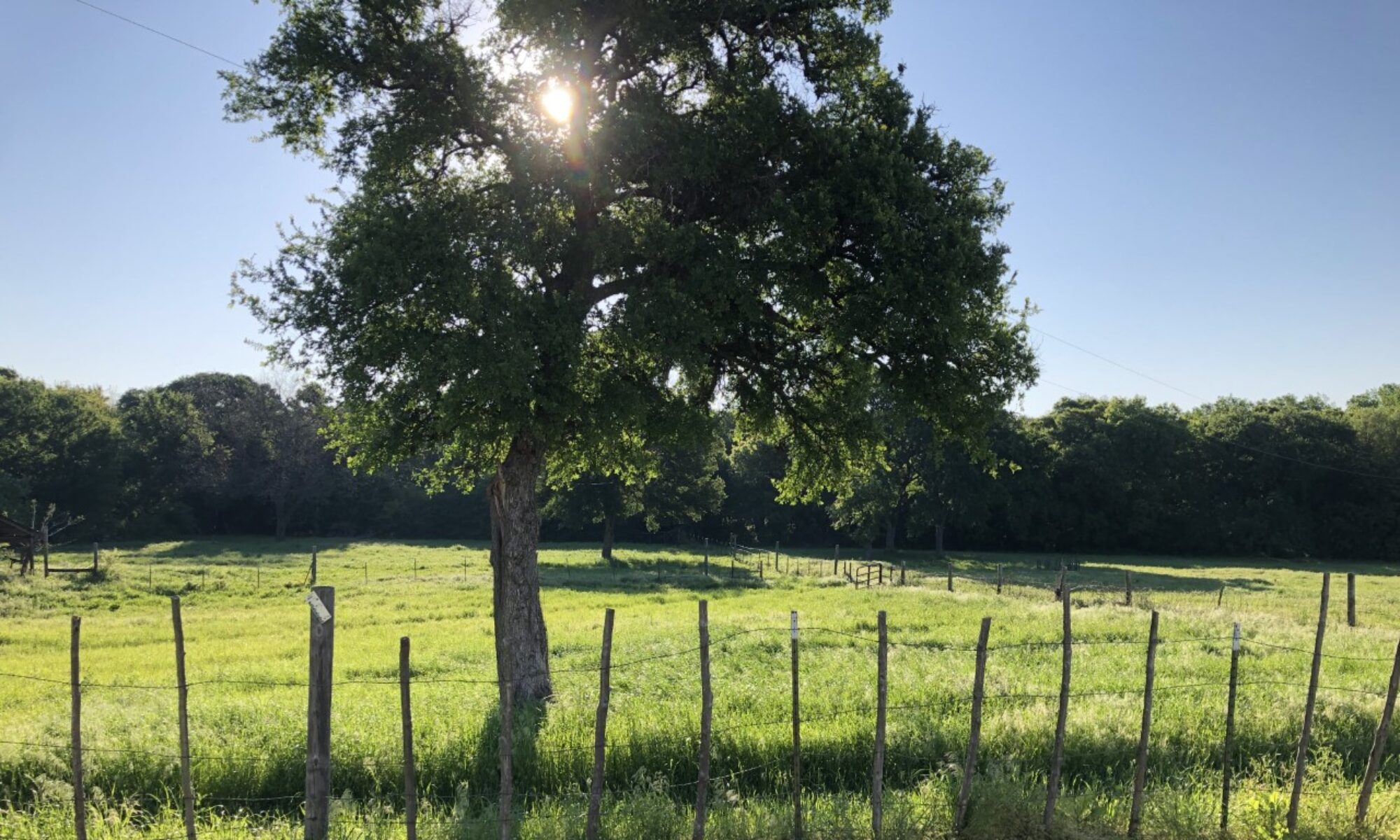One challenge with raising goats is keeping them dry in the winter. When they are dry they can take real cold, but all bets are off if they get wet while cold. Given Texas weather patterns it inevitably rains to drive our cold snaps into place.

Time to expand our coverage footprint beyond the barn. The back of the work shop has space and matches our workflow well, so let’s get to it.

We ran some boy goats here in the spring and it worked well. You can see the hay feeder we can throw hay in from the ramp. Now clear out the trees and brush. Mark out post locations.
Oh, we need some posts! A legacy telephone pole fell in the front pasture last week, 25 feet long! A little sawzall work and now we have two of the three 12ft poles.

Next is marking a level horizontal plane to reference from. The ground isn’t flat, so you use a level and a string. This helps mark how deep the posts can be set so they are the same height at the top. String is a legendary building tool. Keep it handy.

Next is running the auger, setting the posts and verifying they are level. Then attempt to hold the posts straight vertically with wooden braces while the concrete sets. Mixed results with acceptable outcomes for me. DIY grade. Recognize afterwards the posts are not straight cylinders but taper, so the level wasn’t reading on a straight surface. Now run the wooden stringer along the building, checking level along the way.

Then set the stringers along the posts. Deep timber screws to anchor them into the posts. Use long boards leaning against the post to rest stringers in place. Check constantly for level.

Start cutting rafters to connect the stringers. Then realize they are all different and unique lengths and you’re not as hot as you thought you were. Plod forward accordingly. Feel pretty smart about a jig to hold the rafter up while you fiddle about on the ladder on the other end.

Feel great because it’s all coming together and man we’re crushing…hey what’s that pig doing?


Then wonder how you managed to break an aluminum speed square.

Cut off the hang off and move the wood for the stringers to the top. This is the wood the steel will fasten on. Cut sheet steel to right length for the two parts required on top.

Much easier to work at this stage. The up and down the ladder sequence is no longer in play. Just keep your balance, mind your measurements and drive in screws.

Pull the sheet steel up. Fasten from the bottom edge first, overlapping those sheets from the top. Pull out caulk gun to secure flashing between roof and building. Mutter and murmur over the cordless gun being broken and it’s already been warranty replaced and and the sun is setting… I’m not finishing tonight and if only I had done x, y, and z more quickly earlier…

Running numbers in my head as I pack up for the incoming rain. Half day of material acquisition. Two and a half days of work from start to finish. Probably another day ahead for painting to protect the wood. Was it time well spent? We’re deep into the payback phase of buying tools to improve quality and save time. With work it pays back deep dividends, and I enjoy the building.
End result is 30ft long x 16ft deep x 9-12ft high of great utility covered space. Sweat equity is real. Not paying a contractor 3-4k is good value. Growing the farm as a family is even better.
Then I go down to the barn. Now one of the momma goats is getting work done and my wife and daughter are there for it as the sun settles in the west.

Turns out, the shelter for the goats is going to be just fine, even if it’s finished a few days later.





























































